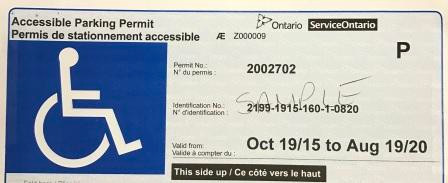Infrastructure plays a significant role in three critical dimensions of sustainable development - economy, environment and society. Global leaders agree that investment in technology improves social and development outcomes. They also argue that Information and communication technologies (ICTs) can speed up growth towards all 17 SDGs.
The SDG 9 states to “build resilient infrastructure, promote inclusive and sustainable industrialisation and foster innovation.” Sustainable Development Goals (SDGs) are implemented worldwide through practical and thoughtful knowledge and information [1].
The impacts of digital infrastructure on SDGs are significant and measurable. Here is how -
- Access to the internet and better telephone communication improves access to information on employment and education. It enables people to beat poverty (SDG 1).
- Digital infrastructure and Internet of Things (IoT) technologies boost agricultural sustainability and ensures food security (SDG 2). Income inequality can also be greatly addressed by telecom. [2]
- Digital infrastructure connects rural and urban areas. Telecom can create income opportunities for underdeveloped countries as well as rural communities (SDG 10).
- The International Telecommunication Union (ITU) mainly contributes to SDG 9. It enables hard-wearing infrastructure, encouraging sustainable industrialisation and nurturing innovation.
ICTs in achieving SDGs
It’s self-evident that infrastructure is integral to development. It provides services that make it possible for society to function and economies to flourish. Hence, infrastructure is the very crux of initiatives to meet the Sustainable Development Goals (SDGs).
Notably, competent and cost-effective ICTs open doors for participation in the digital economy. It helps countries to enhance their overall economic welfare and competitiveness. [3] ICTs are helping most of the underdeveloped countries witness remarkable progress towards achieving SDG 9.
Today, ICTs can create impacts at a massive scale, speed, quality, accuracy, and cost. ICT infrastructure can deliver quality goods and services in health care, education, finance, commerce, governance and agriculture. Moreover, they are highly instrumental in designing and planning civic infrastructure, including improving energy efficiency and making cities and communities sustainable.
ICTs are central to the goal of designing and planning civic infrastructure
According to available studies and research, SDGs 9 & 11 cannot be achieved without substantial ICT investments. [4] It is because ICTs are central to the goal of designing and planning civic infrastructure.
It is a fact that a robust physical network of industry and communication enhances productivity and income. It also boosts education, health, and wellbeing. Similarly, tech advancements augment growth for countries. They can also benefit the world through increased resource and energy efficiency. [5]
ICTs offer the solution to municipalities and city planners
Interestingly, over 50% of the world’s population lives in cities. By 2050, it will be close to 70%. It, in turn, poses massive challenges for municipalities and city planners. It is where Information and communication technologies (ICTs) can be of phenomenal help. ICTs offer the solution to most of these issues. Recognising this, International Telecommunication Union (ITU), the UN specialised agency for ICTs, is leveraging the incredible potential ICTs have to build smart and sustainable cities. [6]
Big Data analytics help in urban operations and services
To go by available media reposts, more and more cities worldwide are now utilising Big Data analytics. These analytics are collected from smart sensors and connected devices. They are used to manage traffic, reduce energy usage, and improve other urban operations and services. [7] It is time to realise that countries must work together to reach the targets laid out by the UN SDG 11. Concerted efforts are needed to develop ICT tools to build cities that are truly smart and sustainable. Governments, international organisations, municipalities, civil society, academia, and the private sector must join forces to make this happen.
Dubai, Singapore, Montevideo, Maldonado, Moscow, Valencia, Pully and Rimini have already requested ITU’s help in implementing “United for Smart Sustainable Cities” (U4SSC) Key Performance Indicators (KPIs). Additionally, ITU has recently brought out case studies on the efforts of Dubai and Singapore to apply smart city innovations. These offer precious reference points to other cities seeking enhanced efficiency and sustainability. [8]
Smart cities need reliable infrastructure, competent to support a massive quantity of ICT-based applications and services. Making this a reality will require the following –
- Synchronised adherence to common standards that guarantee openness and inter-operability.
- International standards to allow harmonised development of Internet of Things and technologies.
- Solutions on how smart grids can build more convenient and efficient energy systems.
- Standards for intelligent 5G systems to improve the viability of smart processes.
Presently, cities account for 70% of greenhouse gas (GHG) emissions. Standards have to be made to help cities to reduce energy costs and emissions. [9] It will be done by making more efficient buildings, electricity grids, street lights, transportation systems, and energy and water networks.
ICT tools like Digi-tech are now widely used to augment citizen engagement and participation. Some examples –
- Sensors and cameras built on existing digital systems enable the Singapore government to ease traffic flow.
- A Kolkata based organisation is using geographic information systems to map unplanned settlements. It helps in providing addresses and vital services for the communities living in those areas.
- A mobile platform for women in Quito reports sexual harassment on the municipal public transport system. It is helping the country in better policing.
Final words
The global construction sector is all set to reform by leveraging the options presented by the digital economy. With each passing day, cities and assets are becoming ever more complex. Moreover, demands on finite resources are becoming more challenging. [10] And on top of that need to look overseas for growth and opportunity has never been greater.
It is time to accept that ICT can significantly advance the design, planning, quality and cost of new infrastructure. The use of digital management can have a tremendous impact on the planning, development, management and maintenance of infrastructure. Moreover, it can ensure significant productivity benefits for governments across the globe. More and more world leaders now believe that Smart ICT will revolutionise the planning and design of infrastructure.
ITCs also can considerably augment the pace and precision of data collection. It will improve the mapping and modelling of infrastructure by making it much more efficient and cost-effective. As a result, communities will be greatly benefitted.
Time has come to build a mature, digital economy that delivers high-performing assets and exceptional value for all. It includes asset owners (public and private), taxpayers, and the community. Such an economy also creates a knowledge base to facilitate smart cities and create digitally built infrastructures.
Sources
[1] [2] Sustainable Development Goal 9: Investing in ICT access and quality education to promote lasting peace. (accessed September 2021)
[3] SDG 9: Industry, Innovation And Infrastructure (accessed September 2021)
[4] SDG 11: Building the World’s Smart Sustainable Cities Together (Accessed September 2021)
[5][6] Authors: Antonio García Zaballos & Enrique Iglesias & Alejandro Adamowicz | The Impact of Digital Infrastructure on the Sustainable Development Goals: A Study for Selected Latin American and Caribbean Countries (Accessed September 2021)
[7] ITU’s approach to using ICTs to achieve the United Nations Sustainable Development Goals
[8] [9] The role of Smart ICT in the design and planning of infrastructure
[10] The critical role of infrastructure for the Sustainable Development Goals






Comments